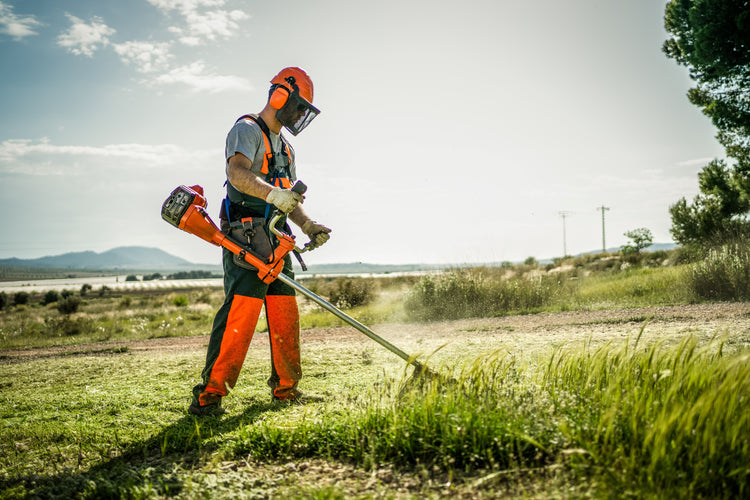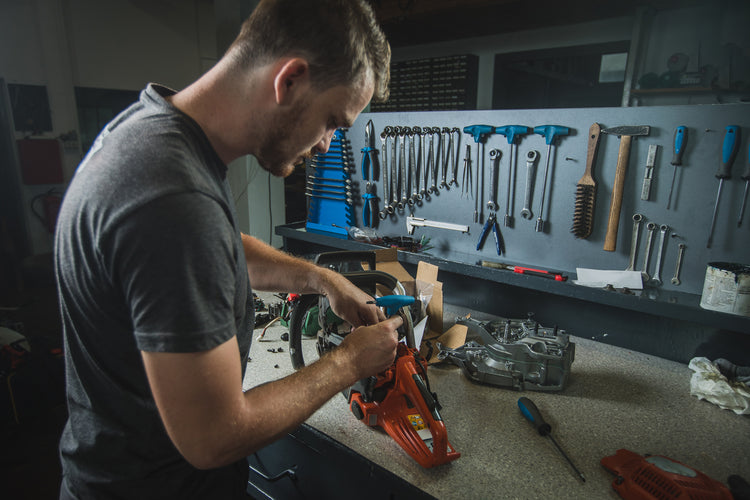Introduction
Landscaping can be a rewarding career for those who love working outdoors and creating beautiful spaces for others to enjoy. However, it can also be a hazardous occupation, with a wide range of potential safety hazards that landscapers must be aware of and prepared for. From working with heavy machinery to exposure to harsh weather conditions, landscapers face a variety of risks on the job. That's why it's essential for those in the industry to prioritize safety and take all necessary precautions to protect themselves from harm.
One of the most critical ways that landscapers can protect themselves on the job is by wearing the proper personal protective equipment (PPE). PPE includes items such as gloves, eye protection, ear protection, hard hats, safety footwear, high-visibility clothing, and fall protection equipment. When used correctly, this equipment can significantly reduce the risk of injury and help to ensure that landscapers can continue to work safely and productively.
In this article, we will explore the importance of protective equipment in the landscaping industry, providing an overview of the hazards that landscapers face on the job and the types of PPE that can be used to mitigate these risks. We will also provide practical tips for selecting and using protective equipment effectively, as well as a more detailed look at some of the specific types of PPE that are recommended for different landscaping tasks. By prioritizing safety and using the right protective equipment, landscapers can continue to enjoy their work while minimizing the risk of injury and staying safe on the job.
Types of Protective Equipment for Landscaping
The landscaping industry can be hazardous, with workers exposed to a range of risks and hazards on the job. Personal protective equipment (PPE) is critical in ensuring that workers stay safe on the job. Here are the different types of PPE that landscapers need to use:
Gloves: Your hands might be your most important tool. Gloves are essential for hand protection from cuts, punctures, and other injuries. They are made of different materials depending on the work being done. For instance, leather gloves are ideal for tasks that require handling thorny bushes, while nitrile gloves are suitable for handling chemicals.
Eye protection: Eye protection is necessary when working with power tools and machines that create flying debris, including dust, wood chips, and grass clippings. Safety goggles and glasses with side shields are examples of eye protection equipment.
Ear protection: Loud equipment such as lawnmowers, chainsaws, and trimmers can cause hearing loss, and ear protection is required in such cases. Earplugs and earmuffs are examples of ear protection equipment.
Hard hats: Hard hats protect the head from impact, penetration, and electrical hazards. They are necessary when working in areas where there is a risk of falling objects, such as trees, or when working under power lines.
Safety footwear: Safety footwear protects the feet from sharp objects, slipping, and electrical hazards. They are essential for outdoor work where workers are exposed to uneven terrain, sharp objects, and slippery surfaces.
High-visibility clothing: High-visibility clothing, such as vests and jackets, is necessary when working in low-light conditions or when working on or near roads. It helps increase visibility and ensures that workers can be seen by drivers.
Fall protection equipment: Fall protection equipment, including harnesses, lanyards, and anchors, is required when working at heights or on roofs.
It is essential to select the right protective equipment for different tasks and conditions. For instance, gloves should be chosen based on the type of work being done, as well as the materials being handled. Eye protection should be selected based on the type of debris that may be flying around, such as dust, wood chips, or grass clippings. Ear protection should be chosen based on the noise levels of the equipment being used, and hard hats should be worn in situations where there is a risk of falling objects.
Husqvarna is a reputable brand that provides a range of protective equipment for landscaping. By choosing the right protective equipment for the task at hand, landscapers can help reduce the risk of accidents and injuries on the job, protecting both the workers and the efficiency of the job.
Choosing the Right Protective Equipment
In addition to knowing the different types of PPE available, it is equally important for landscapers to choose the right equipment for their specific job and ensure it fits properly. Below are some tips for selecting and sizing various types of PPE:
Gloves - Choose gloves made from durable and flexible materials that provide a good grip. It's important to choose gloves that fit well and allow for dexterity to perform tasks.
Eye protection - Look for glasses or goggles with anti-fog coatings, scratch-resistant lenses, and UV protection. It's essential to select eye protection that provides adequate coverage and fits securely.
Ear protection - Choose ear protection that is comfortable and can reduce noise levels by at least 20 decibels. Look for earmuffs or earplugs with a high noise reduction rating.
Head Protection - Look for helmets that meet ANSI standards and have adjustable suspension systems to ensure a comfortable and secure fit. Hard hats should also have ventilation to keep the head cool.
Safety footwear - Select shoes or boots with slip-resistant soles and protective toe caps. It's important to choose footwear that fits well and provides adequate support.
When selecting PPE, it is also essential to consider the specific job and conditions. For example, landscapers working with chainsaws should wear protective chainsaw chaps to prevent injury from the tool's sharp teeth.
It's important to note that PPE should be properly maintained and replaced as needed. Worn or damaged equipment may not provide adequate protection, so it's crucial to regularly inspect and replace any damaged equipment.
In addition, landscapers should choose reputable brands and suppliers, such as Husqvarna and other leading manufacturers, to ensure the highest quality and effectiveness of their PPE.
Best Practices for Using Protective Equipment
In addition to selecting the right protective equipment for the job, it's also essential to use it correctly. Here are some best practices for using PPE in the landscaping industry:
Inspect PPE before each use: Before using any protective equipment, inspect it for any signs of damage or wear and tear. This includes checking for cracks or other damage to hard hats, scratches or cracks in eye protection, and tears or punctures in gloves. If any damage is detected, replace the equipment before using it.
Replace worn or damaged equipment: Even with regular inspections, protective equipment can wear out or become damaged over time. It's essential to replace any equipment that is no longer in good condition.
Use fall protection equipment when working at heights: Falls are one of the most common accidents in the landscaping industry, and fall protection equipment is essential when working at heights. This includes using harnesses, safety nets, and guardrails.
Follow manufacturer instructions: Always follow the manufacturer's instructions for using and maintaining protective equipment. This includes information on cleaning, storage, and replacing equipment when necessary.
Avoid common mistakes: Some common mistakes that landscapers make when using PPE include wearing equipment that doesn't fit properly, failing to use eye or ear protection when necessary, and using damaged equipment. To avoid these mistakes, ensure that all PPE fits correctly, and that workers are properly trained on how to use it.
By following these best practices, landscapers can ensure that they are using protective equipment correctly and minimizing the risk of accidents or injuries on the job.
Recommended Protective Equipment for Landscaping Tasks
When it comes to selecting protective equipment for landscaping tasks, it's important to choose gear that is specifically designed for the job at hand. Here are some of the recommended types of protective equipment for common landscaping tasks:
Cutting and Pruning: Chainsaw chaps are a must-have for any landscaper using a chainsaw. They provide protection against cuts and can help prevent serious injuries in the event of an accident.
Wet Conditions: Safety rain gear is essential for landscapers who work in wet or rainy conditions. Look for high-visibility rain jackets and pants that are made from durable, waterproof materials.
Eye Protection: Safety glasses are a must-have for any landscaping task that involves flying debris. Look for glasses with anti-scratch coatings and wraparound designs for maximum coverage.
Ear Protection: When using loud equipment such as lawnmowers and chainsaws, it's important to protect your hearing with earplugs or earmuffs.
In addition to the specific types of protective equipment listed above, it's important to always wear high-visibility clothing, hard hats, and safety footwear when working on a landscaping job.
When selecting any type of protective equipment, be sure to look for gear that is comfortable, properly sized, and designed for the task at hand. Regularly inspect your PPE for signs of wear or damage, and replace any equipment that is no longer effective.
By taking these steps, you can help ensure that you are adequately protected while on the job, reducing your risk of injury and promoting a safe and productive work environment.
Conclusion
In conclusion, protective equipment is a critical component of staying safe on the job for landscapers. By properly selecting and using the right PPE, landscapers can mitigate many of the hazards they face and reduce the risk of injury or accident. It is essential to consider the different types of protective equipment available, such as gloves, eye and ear protection, hard hats, safety footwear, high-visibility clothing, and fall protection equipment, and to choose the right gear for each task and condition. Remember to inspect and maintain PPE regularly, replace worn or damaged equipment, and use fall protection equipment when working at heights. By prioritizing safety and working with a reputable PPE supplier like Husqvarna, landscapers can stay safe and productive on the job.



